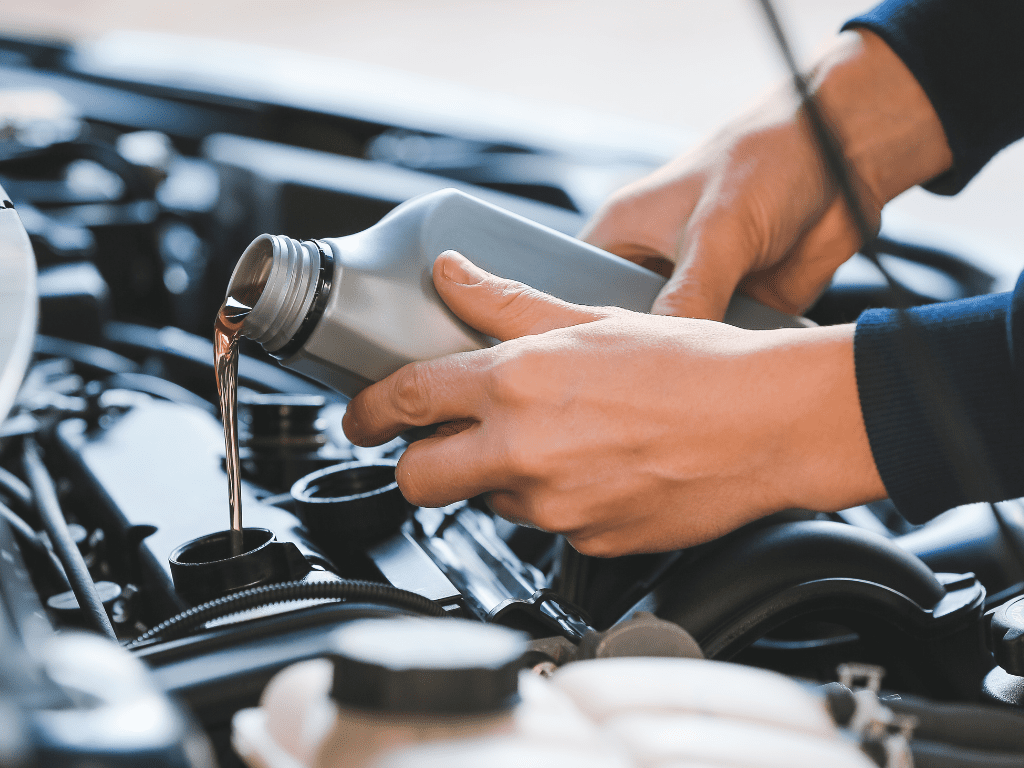Die Sauberkeit des Kraftstoffsystems Ihres Fahrzeugs ist entscheidend für optimale Leistung und Langlebigkeit. Mit der Zeit können sich Ablagerungen, Rost und Verunreinigungen im Kraftstofftank ansammeln und eine Reihe von Problemen verursachen, darunter Fehlzündungen und eine geringere Kraftstoffeffizienz. In diesem Leitfaden erfahren Sie, wie Sie einen Kraftstofftankreiniger effektiv einsetzen können, um das Kraftstoffsystem Ihres Fahrzeugs in Topform zu halten.
Warum die Reinigung Ihres Kraftstofftanks wichtig ist
In Kraftstofftanks sammeln sich leicht Schmutz, Rost und Ablagerungen an, die Kraftstofffilter und Einspritzdüsen verstopfen können. Wird dies ignoriert, kann dies zu erheblichen Motorproblemen und kostspieligen Reparaturen führen. Eine regelmäßige Reinigung mit einem Kraftstofftankreiniger beugt diesen Problemen vor und sorgt dafür, dass Ihr Auto reibungslos läuft.
Materialien, die Sie für die Reinigung eines Kraftstofftanks benötigen
Bevor Sie mit der Reinigung beginnen, sollten Sie alle notwendigen Materialien zusammenstellen. Wenn Sie die richtigen Werkzeuge haben, wird der Prozess reibungsloser und effektiver ablaufen.
1. Kraftstofftank-Reiniger
Eine spezialisierte Kraftstofftankreiniger ist wichtig, um Schlamm, Rost und andere Verunreinigungen abzubauen. AQUAQUICK ist eine hervorragende Option für diesen Zweck, da es sowohl für die Umwelt als auch für Ihr Kraftstoffsystem sicher ist. Es reinigt den Tank effektiv und schützt gleichzeitig die Komponenten vor Schäden.
2. Kraftstoff-Siphonpumpe
Um den alten Kraftstoff aus dem Tank zu entfernen, benötigen Sie eine Siphonpumpe. Dies ist wichtig, um zu verhindern, dass sich alter Kraftstoff mit neuem, sauberem Kraftstoff vermischt, nachdem der Tank gereinigt wurde.
3. Schlüsselsatz
Sie benötigen einen Schraubenschlüsselsatz, um den Kraftstofftank von Ihrem Fahrzeug zu lösen. In den meisten Fällen ist es einfacher, den Tank zu reinigen, wenn er ausgebaut ist.
4. Reinigungstücher und Bürsten
Ein Satz Mikrofasertücher und -bürsten ist hilfreich, um das Innere des Tanks zu schrubben und Schmutz und Ablagerungen wegzuwischen.
5. Schutzausrüstung
Tragen Sie beim Umgang mit Kraftstoff oder Reinigungschemikalien immer Handschuhe und eine Schutzbrille, um Ihre Haut und Augen zu schützen.

Schritt-für-Schritt-Verfahren zur Reinigung Ihres Kraftstofftanks
Nachdem Sie Ihre Materialien zusammengetragen haben, führen Sie die folgenden Schritte aus, um den Kraftstofftank Ihres Fahrzeugs gründlich mit einem Kraftstofftankreiniger.
Schritt 1: Entleeren des Kraftstofftanks
Der erste Schritt besteht darin, den gesamten Kraftstoff aus Ihrem Tank zu entfernen. Verwenden Sie eine Siphonpumpe, um den alten Kraftstoff vorsichtig abzusaugen. Bewahren Sie den Kraftstoff in einem geeigneten Behälter auf, um ihn später sicher zu entsorgen.
Schritt 2: Entfernen des Kraftstofftanks (optional)
Es ist zwar möglich, den Tank zu reinigen, während er noch am Fahrzeug befestigt ist, aber eine gründlichere Reinigung ist möglich, wenn man ihn abnimmt. Verwenden Sie einen Schraubenschlüsselsatz, um den Kraftstofftank von Ihrem Fahrzeug zu lösen. Lesen Sie in der Betriebsanleitung Ihres Fahrzeugs nach, wie Sie den Tank sicher abnehmen können.
Schritt 3: Auftragen des Kraftstofftankreinigers
Sobald der Tank leer ist und abgenommen wurde, gießen Sie die Kraftstofftankreiniger in den Tank. AQUAQUICK zum Beispiel ist so konzipiert, dass es hartnäckigen Schmutz und Rost abbaut, ohne das Material des Tanks anzugreifen. Wirbeln Sie den Reiniger umher und stellen Sie sicher, dass er jeden Teil des Tankinneren erreicht.
Schritt 4: Das Innere schrubben
Bei hartnäckigen Flecken verwenden Sie eine Reinigungsbürste, um das Innere des Tanks zu schrubben. Achten Sie darauf, dass Sie beim Schrubben keine Teile des Tanks beschädigen. Die Kraftstofftankreiniger erleichtert das Entfernen von Rost und Schlamm.
Schritt 5: Ausspülen und Trocknen des Tanks
Spülen Sie den Tank nach dem Schrubben gründlich mit klarem Wasser ab. Lassen Sie den Tank vollständig trocknen, bevor Sie ihn wieder an Ihrem Fahrzeug befestigen. Restfeuchtigkeit kann den neuen Kraftstoff verunreinigen, deshalb ist dieser Schritt so wichtig.
Schritt 6: Wiedereinbau des Kraftstofftanks
Sobald der Tank vollständig getrocknet ist, bauen Sie ihn wieder in Ihr Fahrzeug ein. Verwenden Sie Ihren Schlüsselsatz, um ihn wieder an seinem Platz zu befestigen, und beachten Sie dabei das Handbuch Ihres Fahrzeugs.
Schritt 7: Nachfüllen des Tanks
Wenn der saubere Kraftstofftank wieder eingebaut ist, füllen Sie ihn mit frischem Kraftstoff auf. Für die laufende Wartung können Sie dem Kraftstoff eine zusätzliche Dosis Kraftstofftankreiniger beifügen. AQUAQUICK kann auch regelmäßig verwendet werden, um sicherzustellen, dass Ihr Kraftstoffsystem sauber und effizient bleibt.

Wie oft sollten Sie Ihren Kraftstofftank reinigen?
Sie müssen Ihren Kraftstofftank nicht häufig reinigen, aber es ist wichtig zu wissen, wann dies notwendig ist. Hier sind ein paar Anzeichen, die darauf hinweisen, dass es Zeit für eine Tiefenreinigung mit einem Kraftstofftankreiniger:
- Reduzierte Kraftstoffeffizienz: Wenn Sie bemerken, dass der Kraftstoffverbrauch Ihres Fahrzeugs sinkt, könnte dies auf Verunreinigungen im Kraftstofftank zurückzuführen sein.
- Fehlzündungen des Motors: Schmutz und Ablagerungen können die Einspritzdüsen verstopfen, was zu Fehlzündungen oder Abwürgen des Motors führt.
- Verschmutzter Kraftstofffilter: Wenn Ihr Kraftstofffilter häufig verstopft ist, kann dies ein Zeichen dafür sein, dass Ihr Kraftstofftank gereinigt werden muss.
- Rost: Wenn Sie Rost in Ihrem Kraftstoffsystem oder auf Ihrem Kraftstofffilter sehen, ist es an der Zeit, den Tank gründlich zu reinigen.
Wenn Sie Ihren Kraftstofftank alle paar Jahre oder immer dann reinigen, wenn die oben genannten Symptome auftreten, können Sie kostspielige Reparaturen vermeiden und die Lebensdauer des Motors Ihres Fahrzeugs verlängern.
Künftige Ablagerungen in Ihrem Kraftstofftank verhindern
Vorbeugung ist der Schlüssel zur Vermeidung von häufigen Reinigungen. Hier sind einige Tipps, wie Sie Ihren Kraftstofftank sauber halten und effizient betreiben können:
1. Hochwertigen Kraftstoff verwenden
Die Verwendung von hochwertigem Kraftstoff kann verhindern, dass sich Verunreinigungen in Ihrem Kraftstofftank ansammeln. Minderwertige Kraftstoffe enthalten oft Verunreinigungen, die die Schlammbildung beschleunigen können.
2. Kraftstoffadditive hinzufügen
AQUAQUICK ist nicht nur für Tiefenreinigungen nützlich, sondern auch als regelmäßiger Kraftstoffzusatz. Eine regelmäßige Zugabe kann helfen, kleinere Ablagerungen abzubauen und das Kraftstoffsystem reibungslos zu betreiben.
3. Prüfen Sie regelmäßig Ihren Kraftstofffilter
Überprüfen Sie Ihren Kraftstofffilter regelmäßig und wechseln Sie ihn bei Bedarf aus. Ein verstopfter Kraftstofffilter kann dazu führen, dass Verunreinigungen zurück in den Kraftstofftank gelangen, was eine häufigere Reinigung erforderlich macht.
Schlussfolgerung
Die Reinigung des Kraftstofftanks Ihres Fahrzeugs ist wichtig, um ein gesundes Kraftstoffsystem zu erhalten und Motorprobleme zu vermeiden. Mit den richtigen Werkzeugen, wie z. B. einem hochwertigen Kraftstofftankreiniger wie AQUAQUICK können Sie sicherstellen, dass Ihr Tank frei von Schlamm, Rost und anderen Verunreinigungen bleibt. Wenn Sie diesen Leitfaden befolgen und eine regelmäßige Wartung durchführen, verlängern Sie die Lebensdauer Ihres Fahrzeugs und verbessern die Gesamtleistung.














